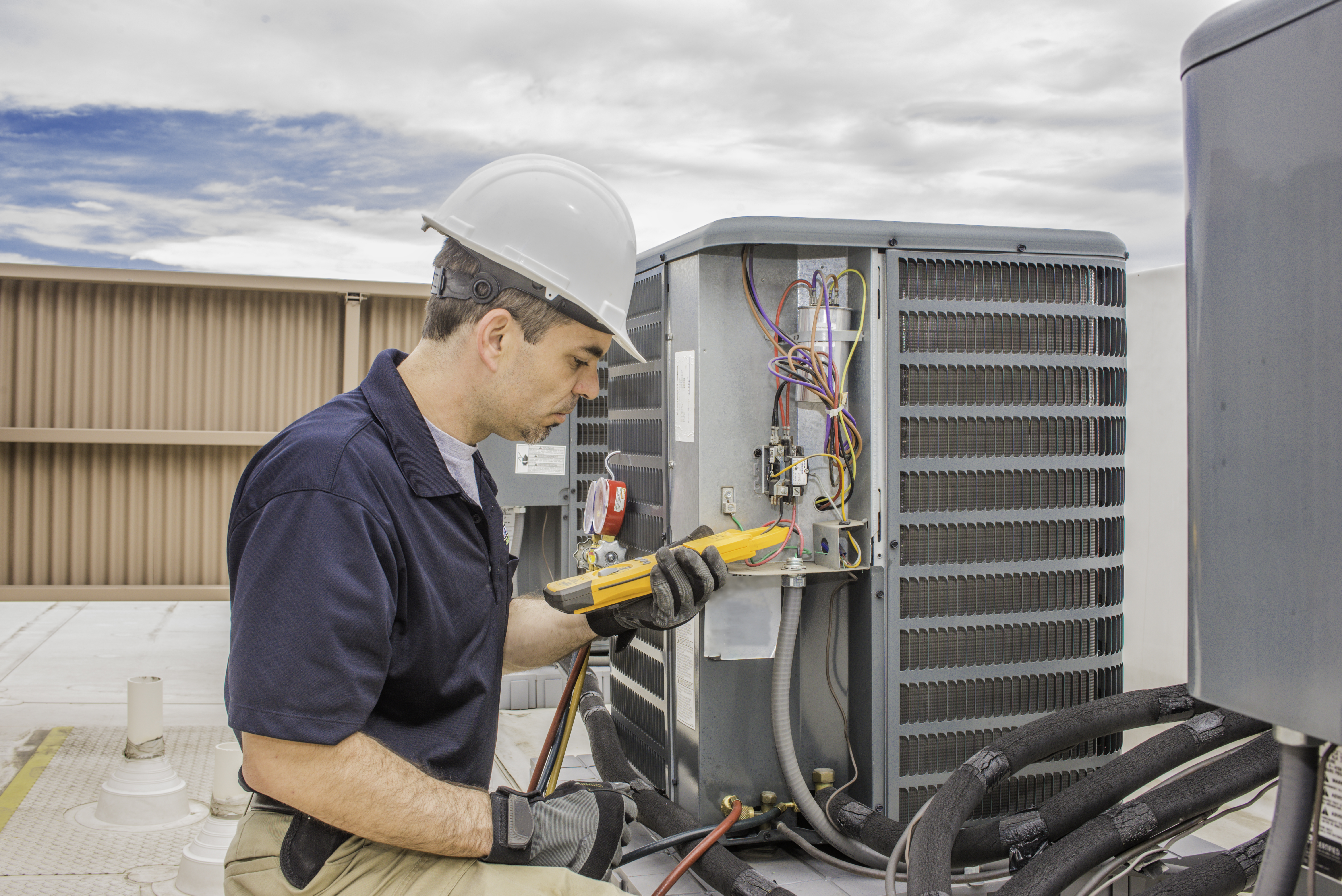Updated December 2025
Intrigued by the challenge of controlling indoor climates? Then you’re smart to be looking into HVAC and gas technician training.
Heating, ventilation, and air conditioning (HVAC) professionals install and service the systems that control temperature and humidity levels inside buildings. They make sure indoor spaces don’t get too hot, too cold, or too uncomfortable.
That often involves working on gas-fired equipment--which is why HVAC programs that include preparation for gas fitter licensing are the complete package. They help students develop the knowledge and skills to pursue a wide range of career paths.
So what exactly will you learn in a combined program, and where can that lead you? Let’s take a look.
WHAT DOES COMBINED HVAC & GAS TECHNICIAN TRAINING TEACH YOU?
A combined program covers the fundamentals of HVAC installation, maintenance, and repair, along with specific training in dealing with propane or natural gas.
You can expect to learn:
☑️ How heating, cooling, and refrigeration systems work
☑️ The basics of electrical circuits, controls, and codes
☑️ How to install venting using sheet metal
☑️ How to thread and install different kinds of piping
☑️ How to test for leaks and diagnose mechanical and electrical problems
☑️ How to work with gas meters, pressure regulators, and relief valves
☑️ How to stay safe on the jobBy the time you graduate, you’ll be fully prepared to challenge the gas technician exams from the Technical Standards & Safety Authority (TSSA).
So what comes next? With your HVAC skills and your gas fitter licence, several career paths open up for you.
CAREER PATH #1: HVAC MECHANIC
HVAC mechanics install and service heating and cooling systems in every type of building, from homes, offices, and schools to factories, warehouses, and ice rinks.
Typical tasks include:
- Laying out ductwork, piping, and wiring
- Hooking up systems to water and fuel supply lines
- Testing components and equipment
- Carrying out routine maintenance like cleaning condenser coils and lubricating motors
- Troubleshooting problems and making repairs
☑️ Salaries
In Ontario, HVAC mechanics earn a median hourly wage of $37, according to the Government of Canada Job Bank.
We found job postings for HVAC mechanics throughout the province that offered anywhere from $35 to $60 per hour, depending on experience.
☑️ Training requirements
To work as an HVAC technician, you must complete an apprenticeship and pass an exam to earn your Certificate of Qualification.
Most employers look for apprentices who have some formal training. By completing HVAC and gas technician training at a trade school or career college, you can boost your odds of landing your first apprenticeship.
CAREER PATH #2: HVAC SHEET METAL INSTALLER
Lots of people begin their HVAC careers installing sheet metal for ductwork. In this role, you will be responsible for:
- Interpreting blueprints and specifications
- Laying out and measuring sheet metal
- Cutting and welding
- Inspecting ductwork and making repairs as needed
- Following all safety procedures
☑️ Salaries
Most of the sheet metal job postings we found came with wages between $28 and $45 per hour.
The Job Bank says the median wage for sheet metal workers in Ontario is $35 per hour.
☑️ Training requirements
HVAC courses usually include basic sheet metal training that can get you started. However, for some positions, you may need to have your Sheet Metal Worker licence (308A).
CAREER PATH #3: GAS FITTER
Gas fitters install and maintain gas lines and related equipment. That includes things like gas meters, pressure regulators, boilers, ovens, fireplaces, and pool heaters.
They take care of tasks like:
- Installing new lines and equipment
- Connecting gas-fired appliances to gas, water, and electrical lines
- Testing for leaks
- Replacing defective components or equipment
- Teaching clients about safety and proper maintenance
☑️ Salaries
Ontario’s gas fitters have a median hourly wage of $36.06, according to Job Bank data.
The gas fitter job postings we analyzed generally paid between $26 and $40 per hour.
☑️ Training requirements
To work independently as a gas fitter, you must hold a G2 licence from the TSSA.
Herzing’s HVAC & gas tech program includes preparation for the TSSA exams, so you can graduate with your G2 licence in hand and be ready to go straight to work.
CAREER PATH #4: TRANSPORT REFRIGERATION MECHANIC
Transport refrigeration mechanics focus on the cooling units in trucks that carry perishable goods like food and medical supplies.
Typical tasks in this role include:
- Assembling and mounting condensers and compressors
- Cutting and connecting pipes
- Charging the unit with refrigerant
- Testing for leaks
- Performing preventive maintenance
- Diagnosing problems and repairing or replacing defective parts
☑️ Salaries
Transport refrigeration mechanics earn a median wage of $37 per hour in Ontario, according to the Job Bank.
Most postings we found were paying $35 to $46 per hour.
☑️ Training requirements
You have to do an HVAC apprenticeship to become a fully qualified transport refrigeration mechanic.
Completing pre-apprenticeship HVAC training is an excellent way to make yourself stand out to potential employers.
WANT TO GET STARTED WITH HVAC & GAS TECHNICIAN TRAINING?
Check out the 52-week HVAC & gas technician program at Herzing College. It provides hands-on training in installing, troubleshooting, and maintaining HVAC systems.
The program also includes gas technician training as well as valuable safety certificates. That means graduates can immediately begin work as gas technicians or get hired as HVAC apprentices.
Click below to get complete program details and chat live with an admissions advisor. We’re here to help!






